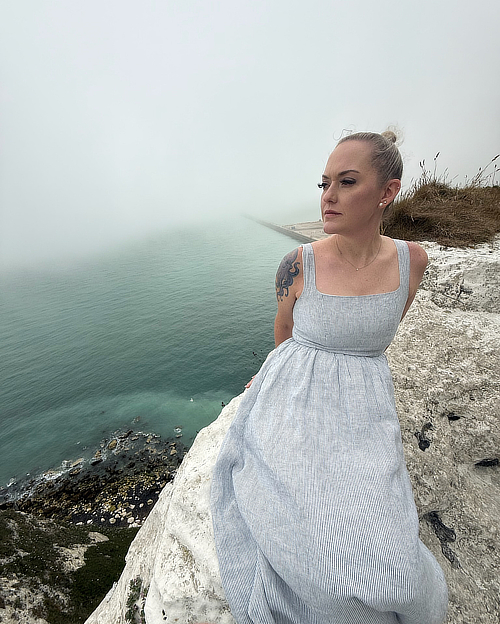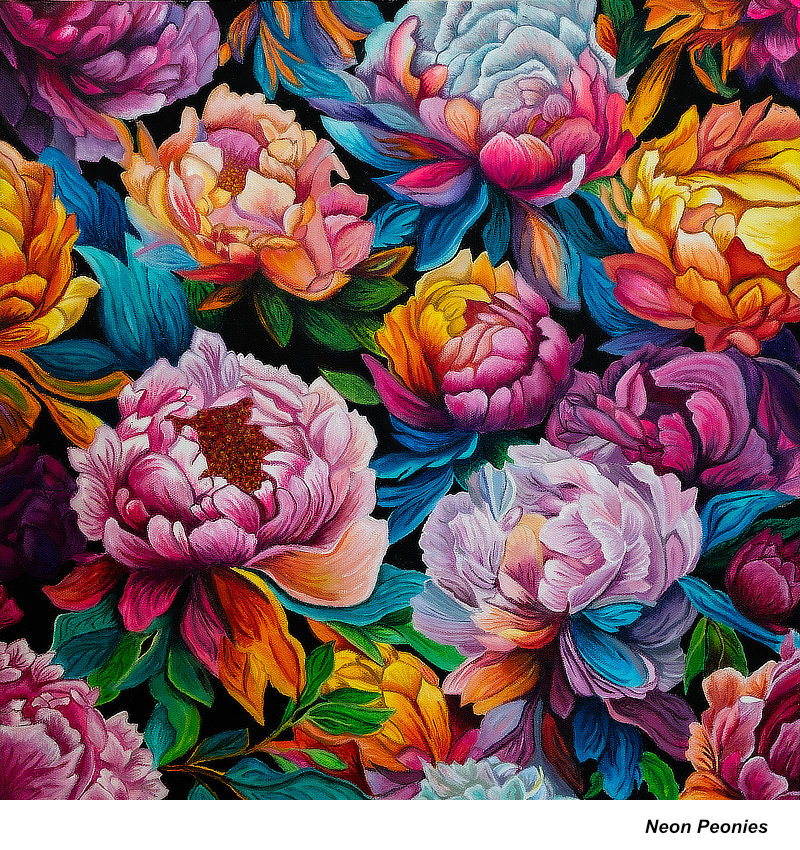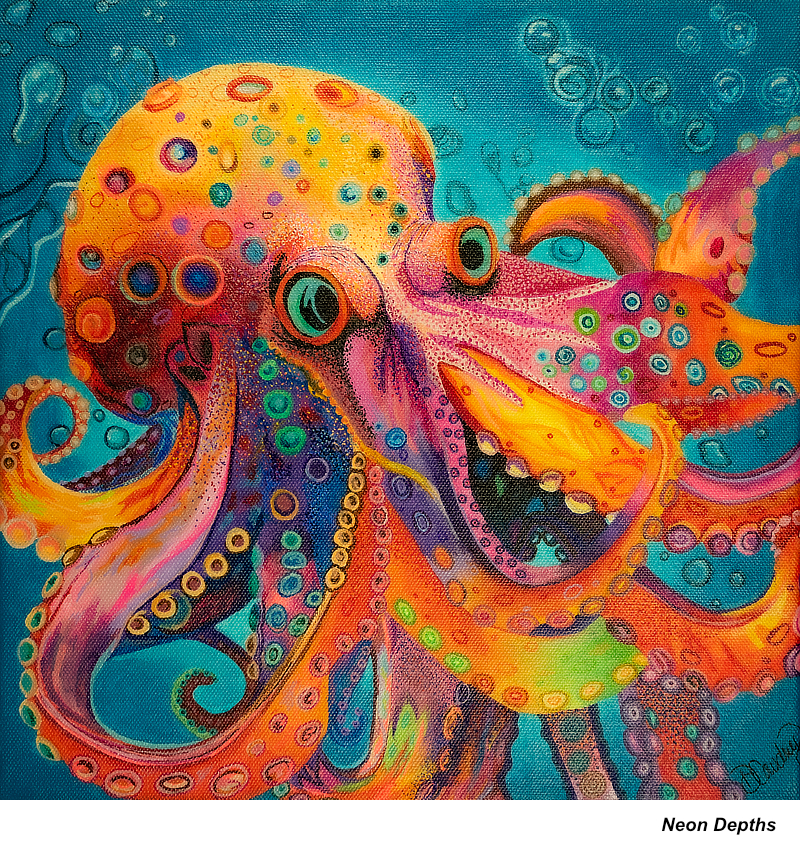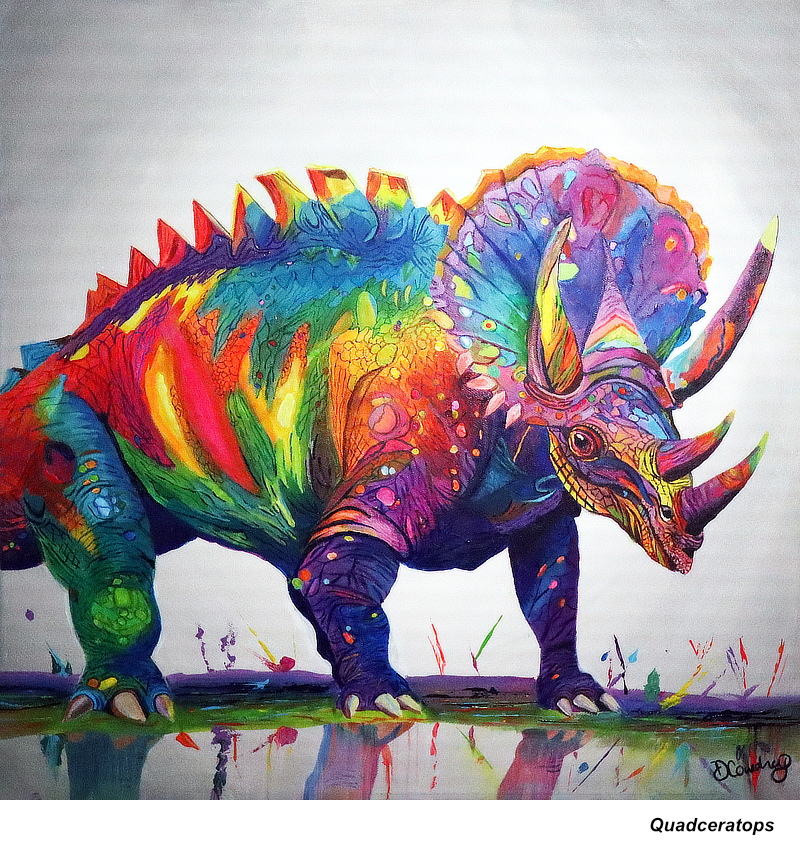
Tell us how you first became interested in creating art.
I've always appreciated art in many forms. Growing up, I was involved in choir and theatre—creative spaces where I found joy and expression. But it wasn’t until more recently that I ventured into the world of visual art. Painting came into my life during a major transition, after spending more than a decade in a high-pressure corporate role. What began as a way to process the complex emotions of grief, change, and personal growth quickly evolved into something far more meaningful. Art became more than a creative outlet—it became a path back to myself. It offered a space where I could explore who I was beyond job titles, expectations, and routines. In many ways, painting has become one of the truest, most vulnerable ways I express my voice.

For me, it’s not just about making something beautiful; it’s about creating something real
Which artists or art movements have influenced you?
I’m drawn to artists and movements that combine emotion, symbolism, and bold use of color—works that don’t just speak to the eye, but to something deeper. Abstract expressionism has been especially influential in my journey, particularly the works of Helen Frankenthaler and Joan Mitchell, whose fearless approaches to scale, gesture, and color continue to resonate with me. I also find immense inspiration in Frida Kahlo’s raw vulnerability and her ability to fuse personal pain with universal themes. Her work reminds me that art doesn’t have to be loud to be powerful—it just has to be honest. But my artistic influences stretch further back, deeply rooted in a long-standing love for history—especially the Renaissance. I’m captivated by the symbolism, structure, and storytelling of that era, as well as the reverence it gave to the human form and spirit. There’s something timeless about the way Renaissance artists explored beauty, mortality, and the divine.

...my goal is to build a life where art, writing, and leadership intersect—a space where creativity becomes a tool for growth, both personally and collectively
Even though my work leans contemporary, I often find myself channeling those classical influences—whether through layered meaning, emotional weight, or the intentional use of color and composition.
Above all, I’m especially inspired by women in art—past and present—who carved out space for themselves in a world that often overlooked or silenced them. From Artemisia Gentileschi painting in the male-dominated courts of 17th-century Europe to modern pioneers like Mickalene Thomas or Jenny Saville, I see a lineage of courage, defiance, and creative power. These women didn’t just create art—they claimed agency. Their stories remind me that to make art as a woman is often, in itself, an act of resistance and reclamation.

How would you describe your artistic style? What inspires you?
My artistic style is intuitive, vibrant, and emotionally driven—anchored in a desire to express what words often can’t. I gravitate toward abstract forms because they allow me the freedom to explore emotion without constraint. I often blend these abstractions with elements inspired by the natural world—botanical motifs, organic shapes, fluid lines—because nature, to me, is the ultimate mirror of the human experience. It evolves, endures, and adapts, and in many ways, so do we. Color and texture play a central role in my work. I’m fascinated by the emotional weight they carry—the way a certain shade or brushstroke can evoke memory, energy, or even healing. I often use bold, saturated palettes contrasted with soft transitions or raw textures to create visual tension, inviting the viewer to feel rather than just observe. These choices are rarely planned—they emerge through instinct and emotion, revealing themselves layer by layer.
I’m also deeply interested in duality. My paintings often hold space for contradictions—soft and bold, delicate and messy, structured and wild. Because life is like that. It doesn’t fit neatly into categories, and neither does art. I embrace the imperfections, the surprises, the places where control gives way to spontaneity. That’s where the soul of the work lives.
Ultimately, I create to connect—with myself, with others, and with something larger. My hope is that each piece offers not just something beautiful to look at, but something honest to feel.
What is the most important thing about art to you?
Honesty. Art, to me, is a space where I don’t have to edit myself. It’s where I can explore emotion, identity, and imagination without needing permission. I love that art gives people the ability to see themselves in something they didn’t create—and maybe feel a little more understood because of it. For me, it’s not just about making something beautiful; it’s about creating something real.
How do you promote your art?
Right now, I promote my work primarily through social media, my website, newsletters, and local exhibitions. I’m still learning how to navigate the art world as a newer artist, so a lot of it has been trial, error, and storytelling—bringing people along for the journey of not just the finished pieces, but the process and purpose behind them. I’ve found that authenticity and community-building go a long way in connecting with collectors and supporters.
What are your plans? What are you working on now?
Right now, I’m deeply immersed in expanding my Alice in Wonderland-inspired series—a body of work that uses abstraction and vibrant color to explore themes of identity, transformation, and the emotional landscape of navigating the unknown. The world of Alice has long fascinated me, not just for its surreal and whimsical aesthetic, but for what it symbolizes: the journey of stepping into unfamiliar territory, questioning reality, and being constantly reshaped by the experience.
This series is especially personal to me because it parallels my own recent reinvention. One of the most formative chapters of that transformation was my time studying Organizational Leadership at the University of Oxford. Not only was Oxford a place of intellectual challenge and self-discovery, but walking those centuries-old corridors and knowing that Lewis Carroll once did the same added another layer of inspiration. The Alice story—born from that very setting—felt like a mirror of my own experience: falling into a world where nothing looks the way you expected, yet discovering yourself in the process.
Through this series, I use layered textures, symbolic shapes, and emotionally driven color palettes to explore the duality of curiosity and fear, logic and imagination, control and surrender. Much like Alice, the figures and forms in my work navigate shifting realities—sometimes playful, sometimes disorienting, always evolving.
In parallel, I’ve been developing another abstract, textured series inspired by birds and aviary symbolism. This body of work explores the themes of flight, freedom, and emotional altitude—the moments in life when we lift off from the familiar and try to find our place midair. I’m experimenting with movement, depth, and tactile surfaces to express the tension between fragility and strength, rootedness and release.
Ultimately, my goal is to build a life where art, writing, and leadership intersect—a space where creativity becomes a tool for growth, both personally and collectively. Whether through visual storytelling or the written word, I want to inspire others to embrace the unknown, honor their inner voice, and step into their next chapter with boldness and heart.
